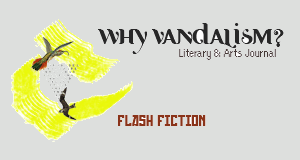1. The print is of an eye; more precisely, the photograph of an eye. The eye presents in a state of abstract stimulation. Cropped tight, blown-up, and contextless, it could be communicating varieties of distress– heartbreak, grief, or even terror, while tempting us to imagine its source. We would be less likely to register a pleasant sensation, owing to the thick tears complementing the lower eyelash.
2. Upon closer inspection, however, we might intuit a delight in hurt, a bittersweet enrapturement that could be self-induced, as in forms of sex or even at the emotional climax of a piece of music, television, or cinema.
3. Though extreme magnification and film grain precludes us from inspecting pupil dilation, it's easy to imagine the eye aquiver with feeling, the lids palpitating with blood pressure, blinking half-open and half-shut. Then again, we could also be looking at the aftermath of the thrill. That would mean the eye is resting, drained and weary, indicating reflection, calm after the storm.
4. The eye does indeed reflect something; the exclamation mark of a gleam below the pupil, that could be extended, with a red marker on the model's face, let's say, until it reached the similarly shaped shine on the left tear, is likely capturing the flash of the photographer's camera. It is at this point that we might revisit the work's title, and underline with our red marker the glass before the tears.
5. We can also discern no capillaries, which would be prominent after a crying spell.
6. Without its surrounding face, the eye also precludes us from deducing the model's gender. The carefully shaped eyebrows and thickly coated lashes could belong to a woman, but the English language is helpful in allowing the subject "model" to encompass multiple identities, such as female-presenting transpeople or simply feminine men.
7. The print hangs over the flat-screen TV, facing us on the couch. Endless hours of content stream into our brains, specifically the nucleus accumbens, known as the pleasure center. Our bleary eyes speak to an entrapment that can be termed neither ecstasy not agony. Sleep, food, and hygiene are forgotten to us.
8. Another cop show is on where someone is chopping up prostitutes. Swollen with the effort of decoding the screen's blue light and the simulated thrills it forever emanates, our eyes roll upward searching for any escape. Yet all they find is another eye, itself rolled upward in multivalent torment, the curse unbroken.
9. Context: the signature scrolled bottom-right on the photograph reads Man Ray, who conceived the piece as a form of revenge on a former lover and assistant, creating multiple variants beginning in the early ‘30s. Not only are the tears fake, but also the entire face belongs to a mannequin woman, repeatedly chopped up and probed in a state of ornamented duress.
